Search for Compliance Information
Compliance for Confluence features a powerful search tool, enabling you to find pages based on information from Classification and Data Detection. To use the Search tool, open the Apps Menu (A) and select Compliance (B) to navigate to the main app page, then click on Search (C).
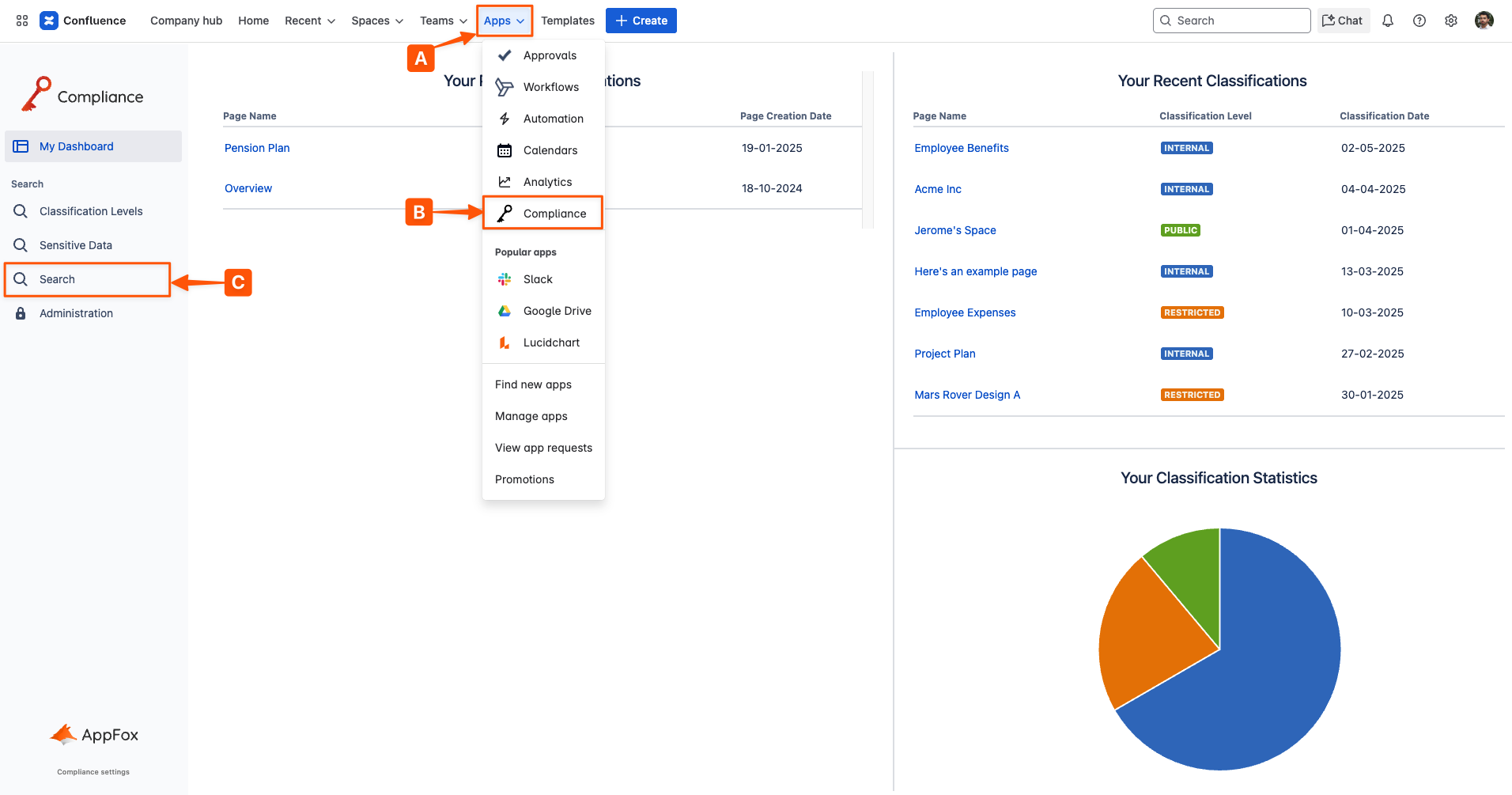
The Search page is an all-in-one search tool that combines the previous Classification Levels and Sensitive Data search pages and improves on their capabilities.
Filters
Search includes a variety of filters so you can pinpoint the pages you’re interested in, whether that’s pages pending classification, pages flagged with specific detected data types, or any other criteria.
The filters are controlled via the Filters menu (D), accessed in the top-right of the page. Clicking this button will show or hide the filters panel (E) to the right of the search results.
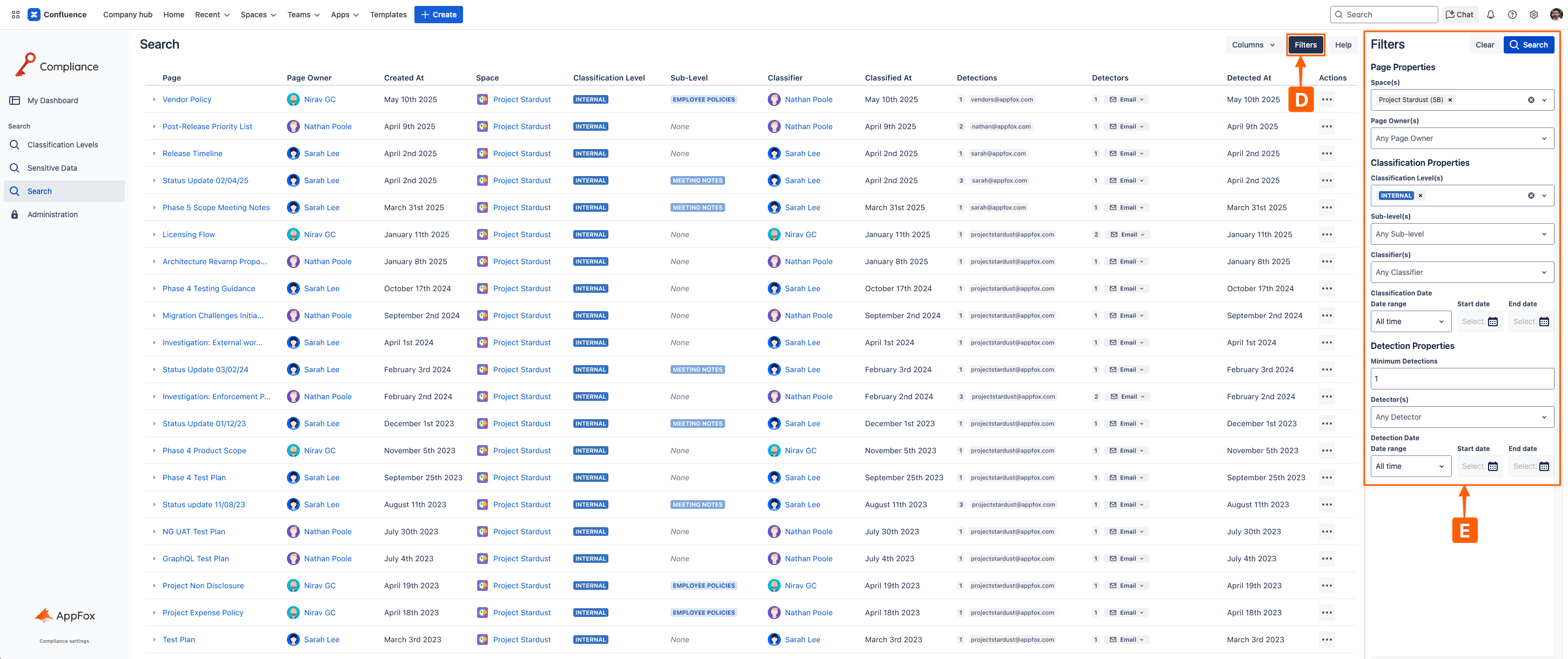
Page Properties
Space(s) – limit pages to those within a set of Confluence spaces
Page Owner(s) – limit pages to those owned by specific Confluence users
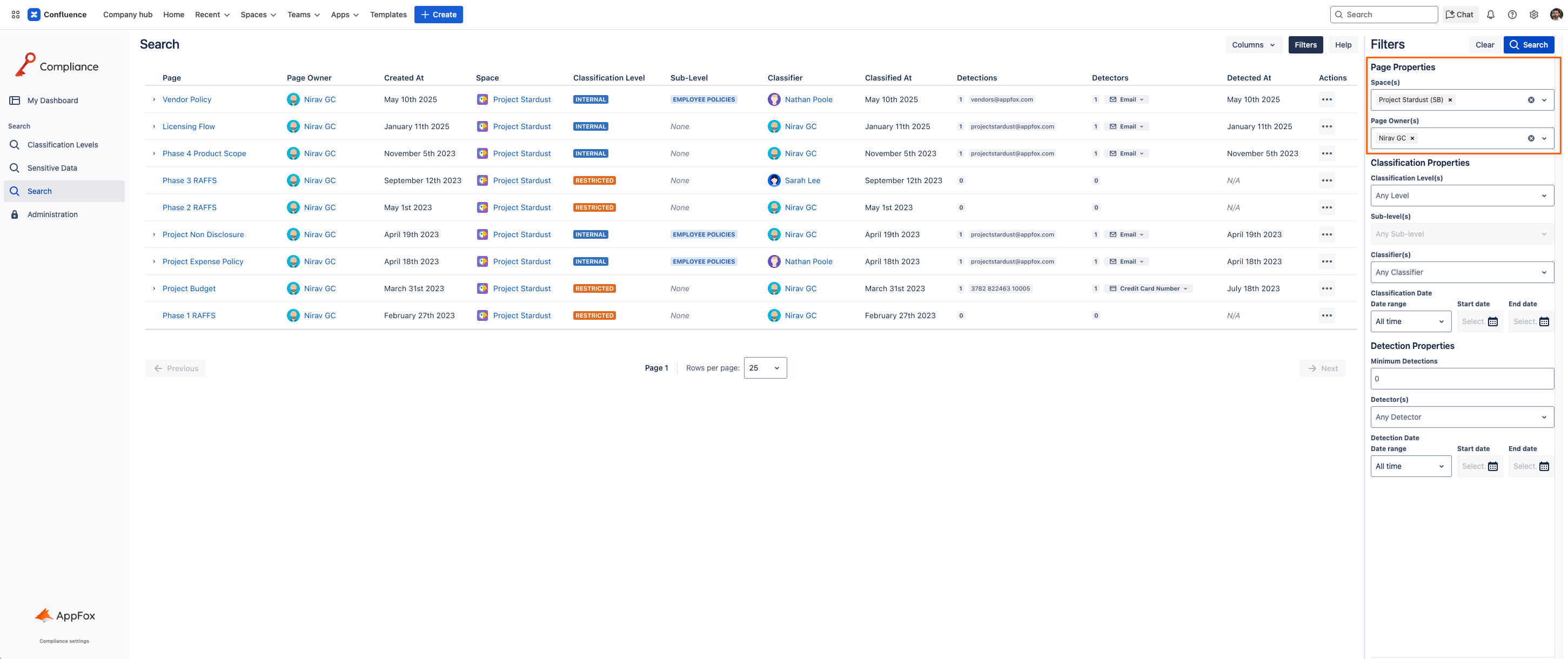
Classification Properties
Classification Level(s) – limit pages to those assigned to one of these given Compliance levels, and/or are Pending Classification
Sub-level(s) – for the selected classification levels, limit pages to those with particular sub-levels, or with no sub-level at all
Classifier(s) – limit pages to those classified by one of these given Confluence users
Classification Date – limit pages to those classified within a given date range
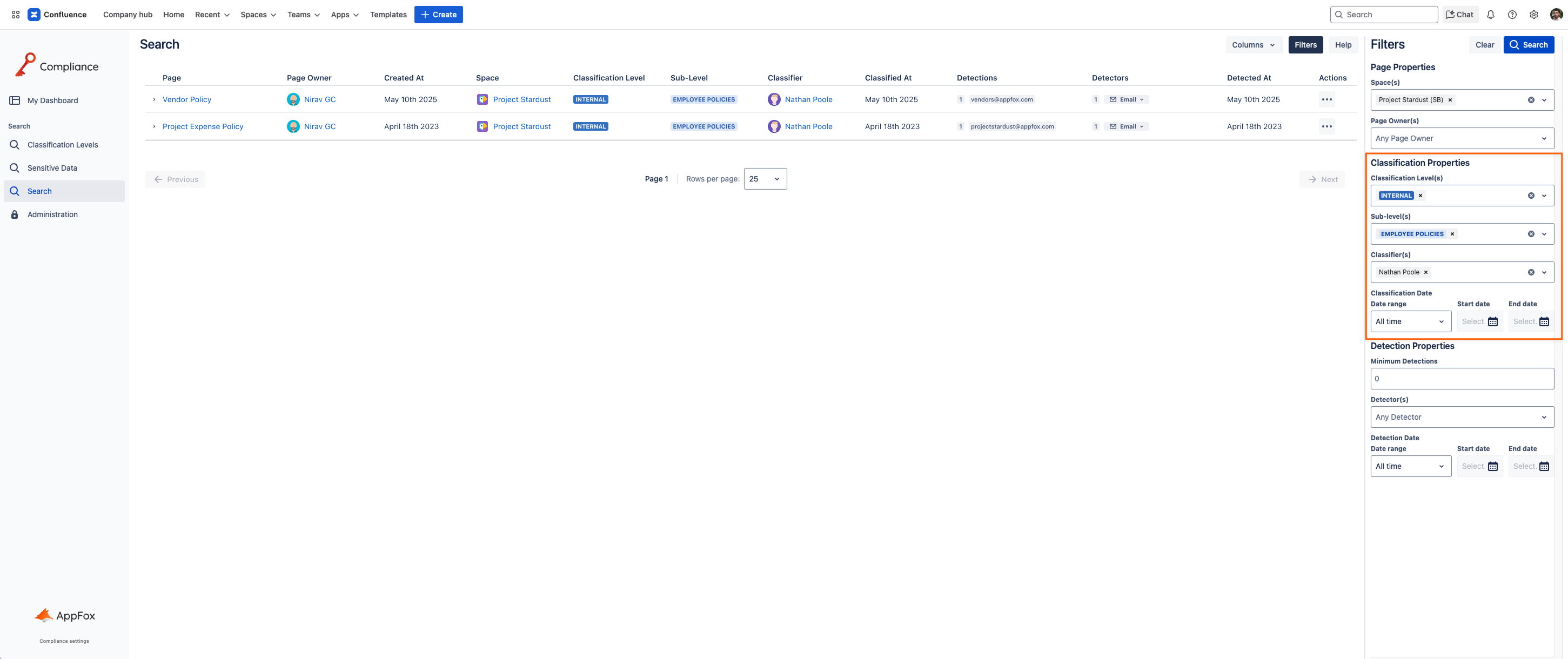
Detection Properties
Minimum Detections – limit pages to those with a minimum number of data detections
Detector(s) – limit pages to those containing detections from this set of detector types
Detection Date – limit pages to those with data that was detected during a specific date range
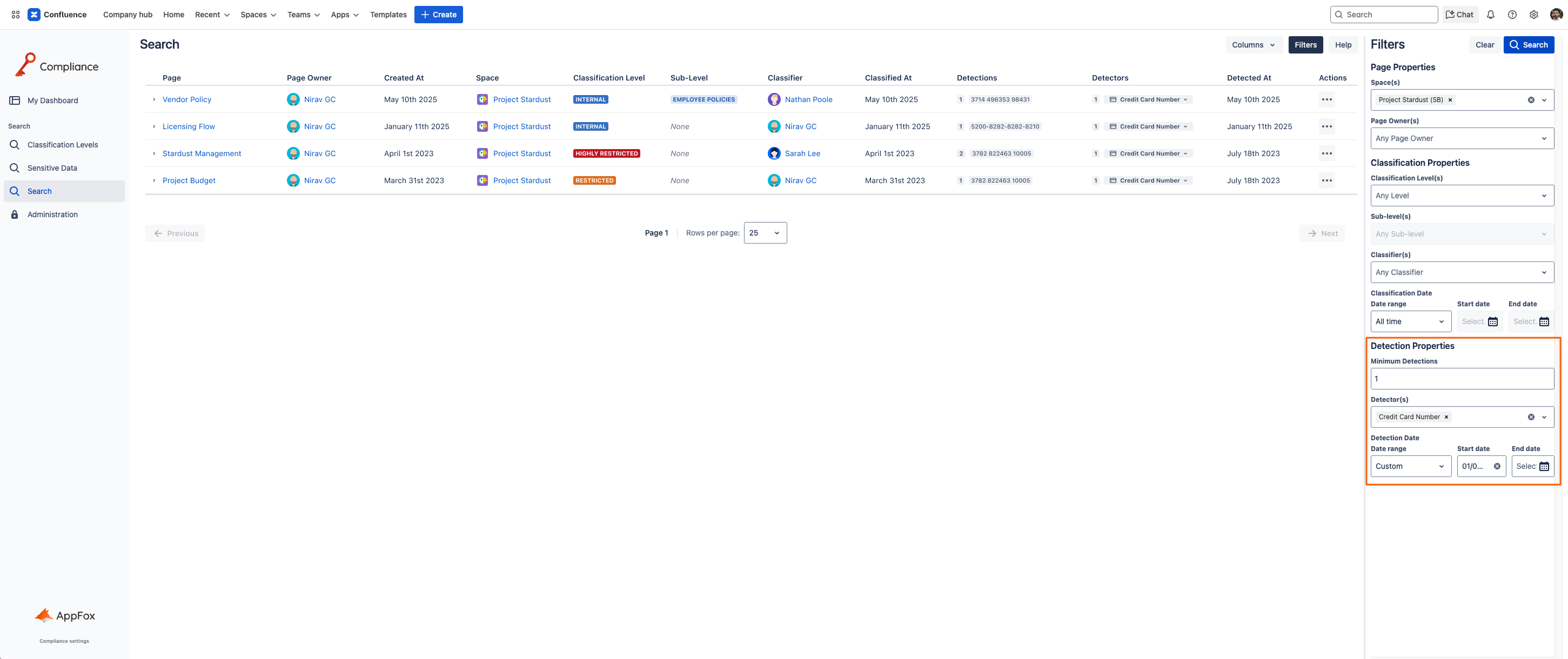
Results
By default, the Search page permits the user to find all Confluence pages regardless of page, classification, or detection properties; by default, all filters are set to Any (i.e., ignored).
Results are presented as a table of information. Each row corresponds to a given Confluence page. Basic information about the page (such as owner, creation date, and space), as well as Compliance info relating to Classification and Data Detection, is provided via columns.
To view information related to Data Detection, users must have the data detection search permission (controlled from within the Administration section of the Compliance app by Confluence administrators).
Any filters that have been applied will reduce the number of pages returned by the search, allowing you to pinpoint pages based on your concerns.
Where a page has detections, the row will have a dropdown icon (F) that, when expanded, presents sub-rows for the page (G) – a sub-row per each detection on the page.
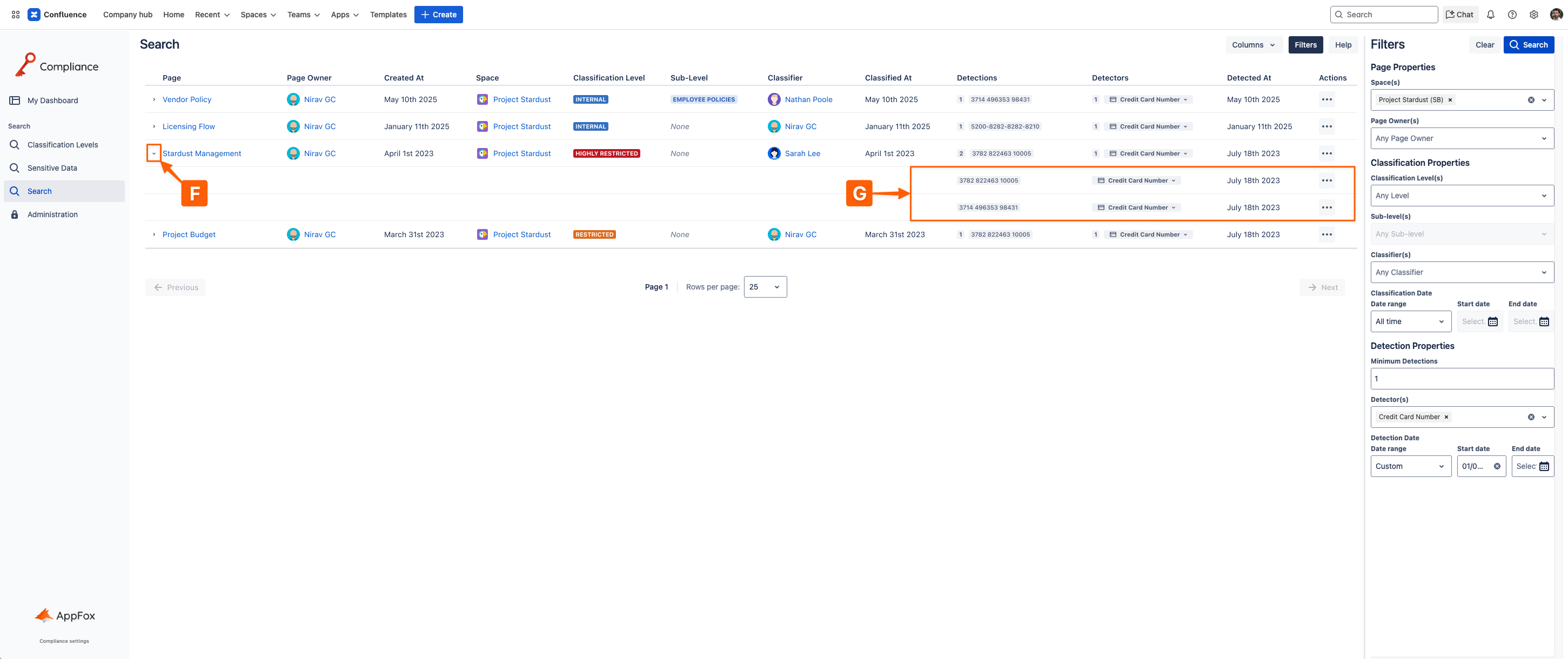
Columns
A variety of information about your Confluence pages, and how they relate to Compliance, is available via the table columns of the results.
The displayed columns are controlled via the Columns menu (H), accessed in the top-right of the page.

Page
Displays the page title (and links to the page in Confluence), as well as the status of the page if relevant (i.e. draft, trashed, archived, live doc, or unknown).
Hovering the title will reveal the full page title and status, which is useful for longer page titles that get cut off by the results table.
In some cases, the Confluence page ID may be shown (as grey text), which means the page either no longer exists in Confluence but Compliance still has data on the page (unlikely), or the user does not have permissions to view that particular page (likely); unfortunately, limitations with the Confluence API prevents Compliance from differentiating between the two causes.
Page Owner
The owner of the Confluence page (with a link to the user in Confluence).
A Confluence user ID may be shown (as grey text) if the user is unknown (i.e., could not be retrieved from Confluence).
Created At
The date the page was created at.
Hovering the date will reveal a more specific timestamp with date and time info.
Space
The Confluence space that the Confluence page resides in (with a link to the space in Confluence).
A Confluence space ID may be shown (as grey text) if the space is unknown (i.e., could not be retrieved from Confluence).
Classification Level
The classification level assigned to the page, which shows as Pending Classification if no level has been assigned.
Hovering the classification level will show its description, if one has been provided in Compliance.
Sub-Level
The sub-level assigned to the page, which shows as None if no sub-level has been assigned.
Hovering the sub-level will show its description, if one has been provided in Compliance.
Classifier
The user that classified the page with the given classification level (with a link to the user in Confluence). If the page has not been classified, this column shows as N/A (not applicable).
A Confluence user ID may be shown (as grey text) if the user is unknown (i.e., could not be retrieved from Confluence).
Classified At
The date the page was classified at. If the page has not been classified, this column shows as N/A (not applicable).
Hovering the date will reveal a more specific timestamp with date and time info.
Detections
For the main row of each page, this shows the number of detections on the page and will also provide a preview of the first of those detections.
For the sub-rows of each page, this shows each individual detection on the page.
Detectors
For the main row of each page, this shows the number of detectors triggered by detected texts on the page, as well as a preview of the detector for the first of the detections.
For the sub-rows of each page, this shows the detector corresponding to the detected text of the sub-row.
The detector is interactable; clicking on the detector name will reveal the description and regular-expression defining the detector.
Detected At
The date the detected text was detected on. For pages without detections, this column shows as N/A (not applicable).
Hovering the date will reveal a more specific timestamp with date and time info.
Actions
Several actions are available directly from the table of results, depending on the type of row and its data. Actions are accessed via a button on each row within the Actions column.
Page Actions
The page-level action menu (J) contains options for classifying a page, excluding a page from detection, and deleting the current detections.
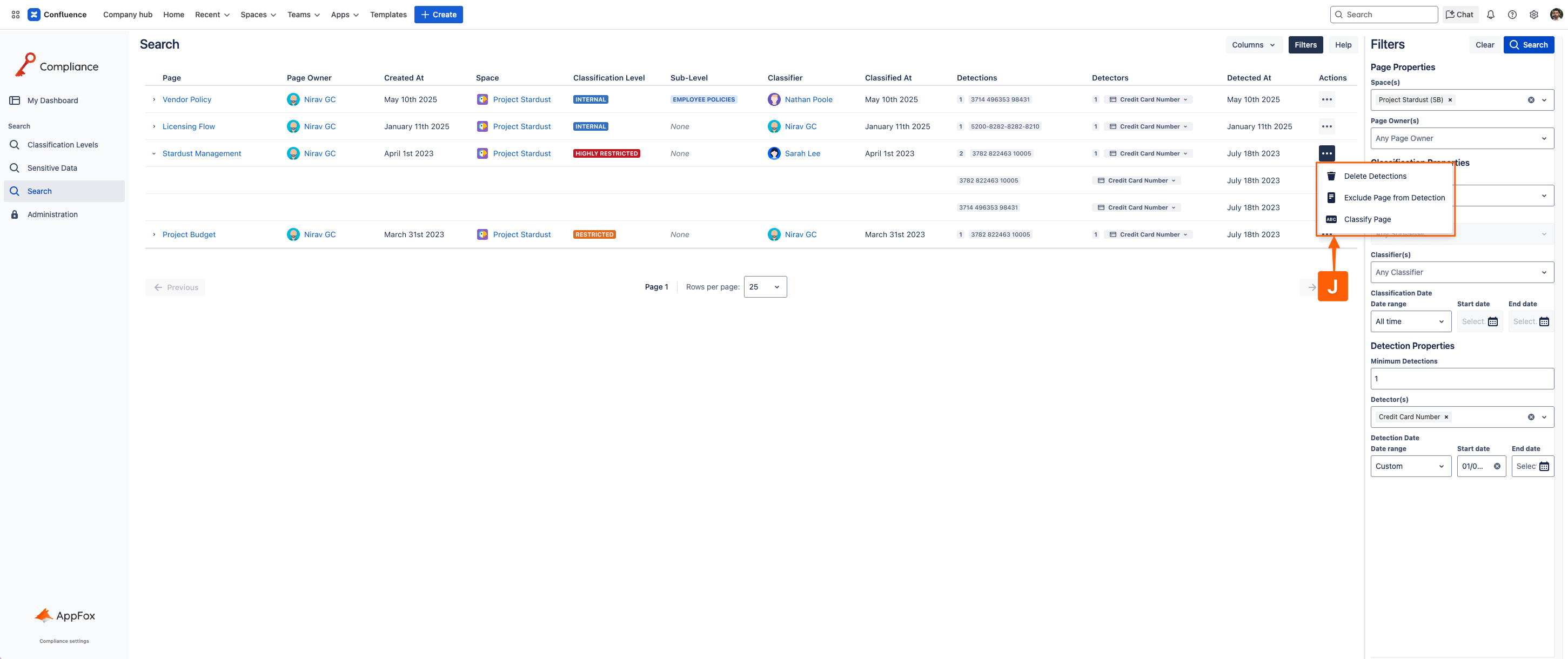
Classify Page
For any page row, users can select to ‘Classify the Page’. This will open the familiar Compliance modal for setting the classification level of that page.
This action is available to all users but expected restrictions still apply, such as the user needing to have permission to classify the page (set by Confluence administrators in the Compliance’s Administration section).
Exclude Page from Detection
For any page row, an admin user can select to ‘Exclude Page from Detection’, which adds the page to Compliance’s list of excluded pages (i.e., pages that are ignored by sensitive data detection).
Delete Detections
For any page rows that shows there are detections on the page, admin users can select to ‘Delete Detections’. This simply removes all existing data detection results for the page.
Note that new data detection results may be added for the page if the page is still in the data detection scope; for example, if the page gets updated and scanned after an admin has deleted its detections.
Detection Actions
The detection-level action menu (K) contains options to redact the detected data, or exclude the selected data from detection.
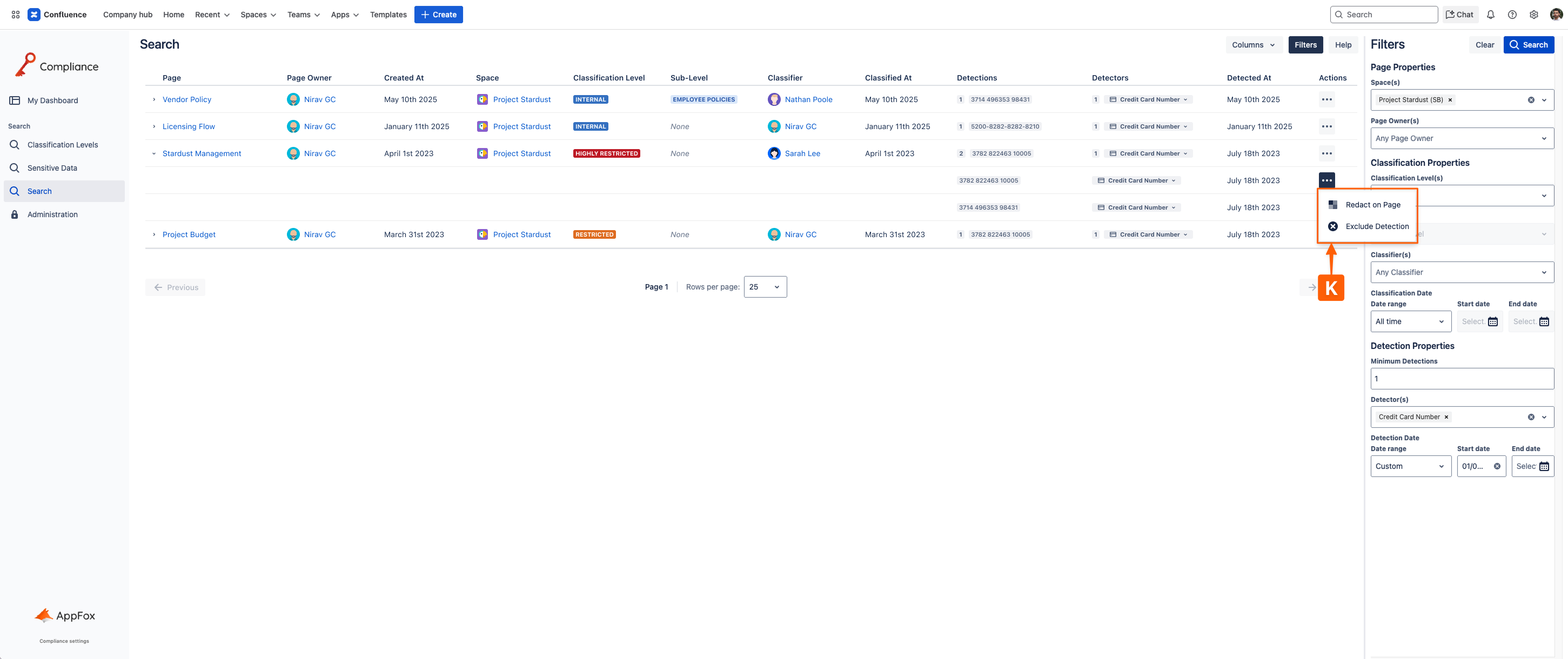
Redact on Page
For any data detection row (i.e., a sub-row of a page result), users can select to ‘Redact on Page’.
This action allows users to redact specific detected texts on Confluence pages (i.e., replace detected data: sensitive_data → ██████████████ – and optionally delete the current version of the page). This action is subject to the user triggering the redaction having edit permissions on the page.
Exclude Detection
For any data detection row (i.e., a sub-row of a page result), admin users can select to ‘Exclude Detection’. This initiates the creation of an exclusion rule for the data so that data of its like can be ignored across all Confluence page by Compliance’s Data Detection going forward.
Need support? We’re here to help 🧡
If you have any questions or would like to speak with us, please don’t hesitate to reach out to our Customer Support team.
.svg)